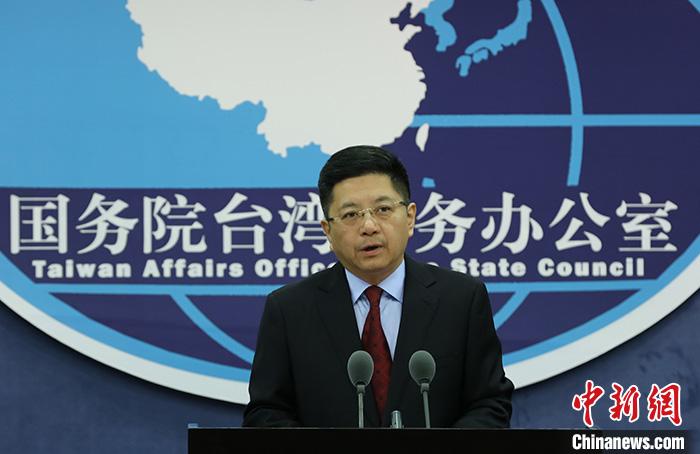China News Service, September 16th, Taiwan Affairs Office spokesperson Ma Xiaoguang said at a regular press conference on the 16th that the new crown pneumonia epidemic this year has had a certain impact on cross-strait exchanges and personnel exchanges.
At the same time, the DPP authorities have intensified the restrictions on cross-strait exchanges and exchanges, unreasonably obstructing Taiwan compatriots and relatives stranded in the mainland from returning to Taiwan, and still completely bans mainland people from going to Taiwan, and is tempted by Taiwan people and non-governmental organizations to participate in normal cross-strait exchange activities. Threatening intimidation.
Data map: Ma Xiaoguang, spokesperson for the Taiwan Affairs Office of the State Council.
Photo by China News Agency reporter Yang Kejia
At the press conference, a reporter asked the spokesperson to introduce the main situation of cross-strait personnel exchanges and economic and trade exchanges since the outbreak of the epidemic this year.
In this regard, Ma Xiaoguang said that this year's new crown pneumonia epidemic has had a certain impact on cross-strait exchanges and personnel exchanges.
At the same time, the DPP authorities have intensified their restrictions on cross-strait exchanges.
They unreasonably obstructed Taiwan compatriots and relatives stranded in the mainland from returning to Taiwan. They still ban mainland citizens from going to Taiwan, enforce the so-called "reverse osmosis law", create "green terror", and participate in normal cross-strait exchange activities against Taiwanese people and non-governmental organizations. Threats and intimidation at every turn.
Ma Xiaoguang said that cross-strait exchanges conform to the common aspirations, interests and well-being of compatriots on both sides of the strait, and cannot be forbidden or blocked by anyone or any force.
From January to February when the epidemic was the most severe this year, more than 100,000 Taiwanese compatriots still came to the mainland.
Since the outbreak of the epidemic, compatriots on both sides of the Taiwan Strait have overcome temporary difficulties and successfully held a series of exchanges on different topics in economic, cultural, medical and health, education, youth, grassroots, folk beliefs and other fields and sectors through the combination of online and offline Internet. The event continued the momentum of cross-strait exchanges.
The cross-strait trade volume and Taiwanese investment in the mainland continued to grow.
According to statistics from the General Administration of Customs, from January to August this year, cross-strait trade volume was US$158.928 billion, a year-on-year increase of 10%.
Among them, the mainland's exports to Taiwan were US$37.733 billion, an increase of 8.11% year-on-year; the mainland's imports from Taiwan were US$121.195 billion, a year-on-year increase of 10.6%.
In August of this year, Taiwan’s exports to the mainland (including Hong Kong) accounted for 46.39% of Taiwan’s total exports, a record high.
Many large Taiwanese-funded projects have started production or increased capital and expanded production in the mainland, involving electronic information, petrochemical, cement and many other industries, showing new characteristics such as large investment amount and high technology content.
Relevant statistics on the island also show that from January to July this year, Taiwanese investment in the mainland increased by more than 50% year-on-year.
Ma Xiaoguang finally emphasized that the two sides of the Taiwan Strait were isolated for 38 years, but the artificial barriers that blocked the exchanges of compatriots were finally broken. Today, more than 30 years after cross-strait exchanges began, the internal driving force and accumulated deep foundation of cross-strait exchanges and cooperation in various fields have been formed. The reversal of historical trends cannot be shaken by the immediate difficulties and obstacles.

